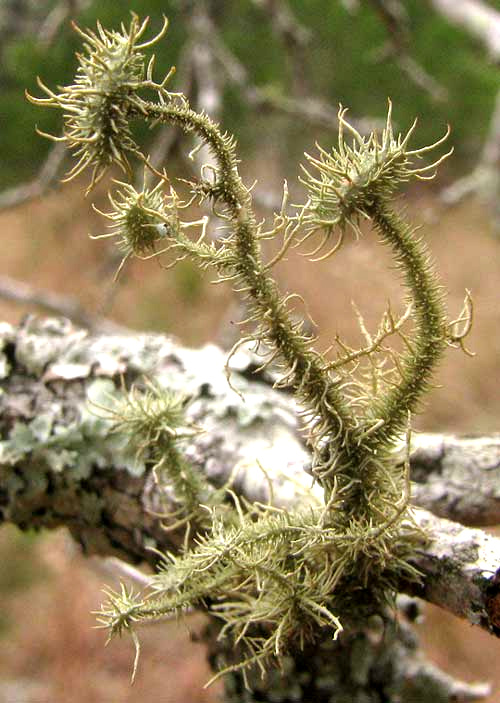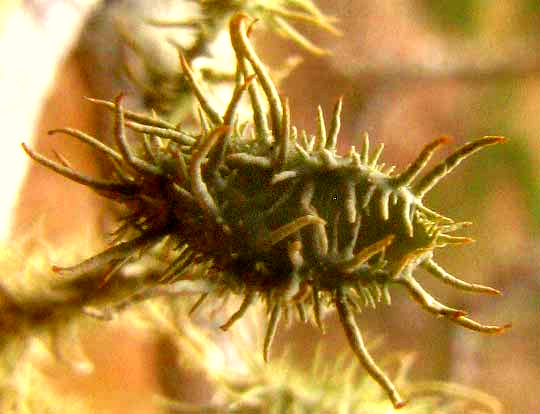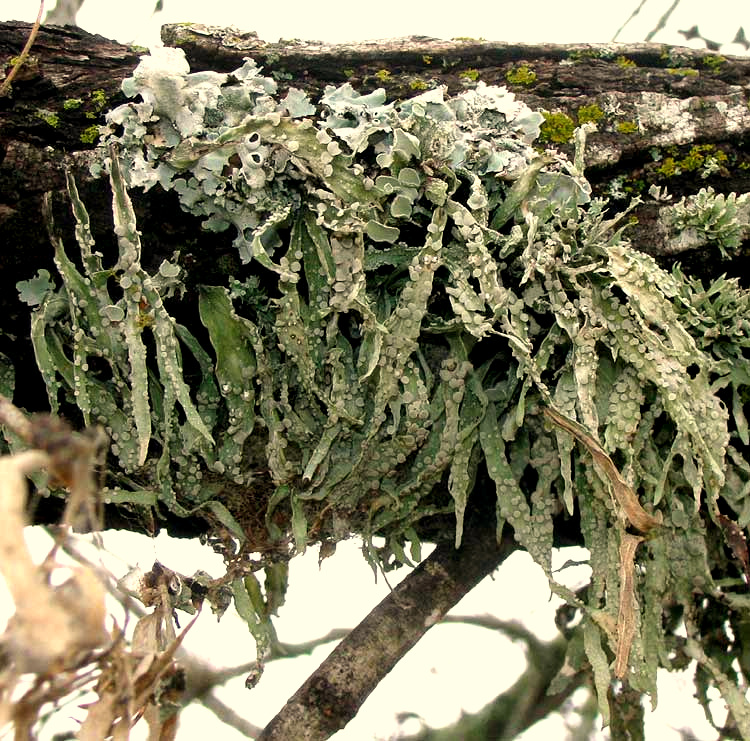
Fruticose lichens don't look at all like fruits. The word "fruticose" is a technical term meaning "shrubby," and many fruticose lichens, such as the Bushy Beard Lichen, Usnea strigosa, at the right, do look a bit like a shrub or tree. This handsome lichen is common worldwide. Notice how its spore-producing apotheciea grow atop stems almost like sunflower heads atop leafy stalks. A view of one from above appears below.

Fruticose lichens may be the most eye-catching of the various lichen kinds, and they appear in an enormous variety of forms and colors.

At the right, look how different the Cartilage Lichen, Ramalina celastri, is from the above Bushy Beard Lichen. The Cartilage Lichen's long, slender thalli dangle from tree limbs in the Southern Hemisphere as well as southern North America, Central America, southeast Asia, Australasia, and eastern Africa.

At the left, a close-up shows the Cartilage Lichen's apothecia, very different from those of above.
One advantage of being a fruticose lichen instead of any of the other more ground- or tree-bark-hugging kinds is that "bushy" lichens expose relatively more surface area to air currents which sometimes may be so humid, or even filled with fog, that water droplets collect on the branches.

In early morning you may well find the Slender Orange Bush Lichen, Teloschistes exilis, shown at the right, glistening with dew, which of course is water the lichen needs. This species has a curiously "disjunct" distribution, occurring at widely separated locations: In the US from Georgia and Tennessee, west to Texas, then also in coastal California as well as Central and South America.
Another advantage of being fruticose is that with so many branches exposed to the elements, parts are more likely to be broken off, so that vegetative reproduction via fragmentation is easier.